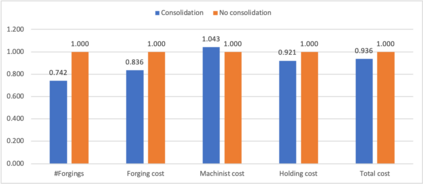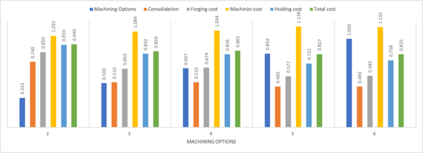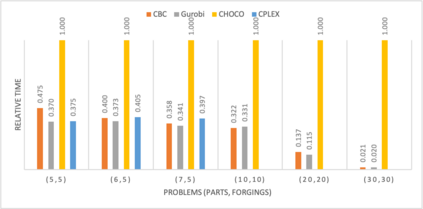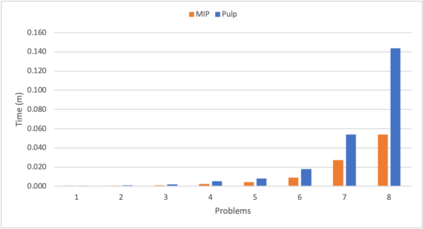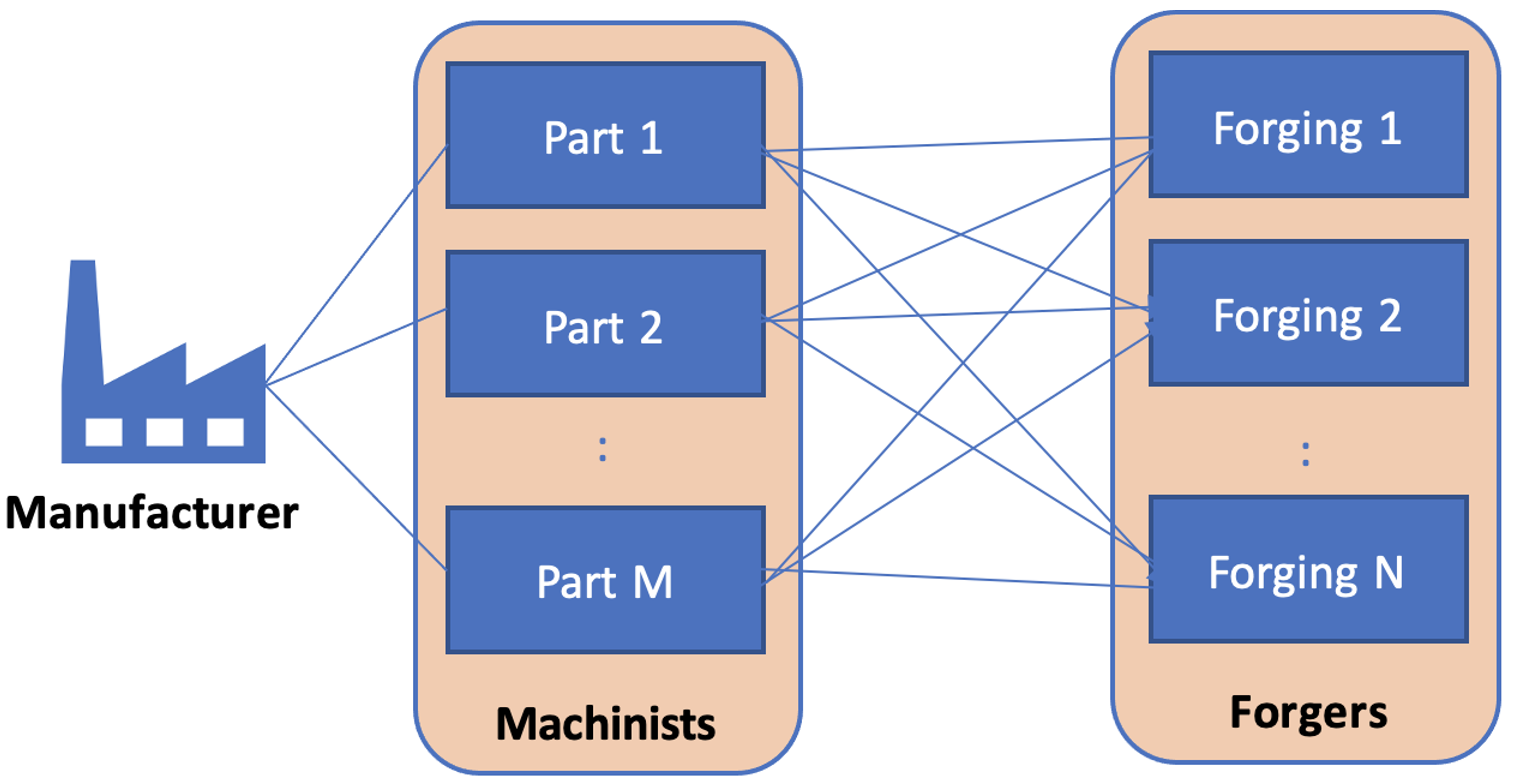While consolidation strategies form the backbone of many supply chain optimisation problems, exploitation of multi-tier material relationships through consolidation remains an understudied area, despite being a prominent feature of industries that produce complex made-to-order products. In this paper, we propose an optimisation framework for exploiting multi-to-multi relationship between tiers of a supply chain. The resulting formulation is flexible such that quantity discounts, inventory holding and transport costs can be included. The framework introduces a new trade-off between the tiers, resulting in cost reductions at one tier at the expense of increased costs in the other tier, which helps to reduce the overall procurement cost in the supply chain. A mixed integer linear programming model is developed and tested with a range of small to large-scale test problems from aerospace manufacturing. Our comparison to benchmark results show that there is indeed a cost trade-off between two tiers, and that its reduction can be achieved using a holistic approach to reconfiguration. Costs are decreased when second tier fixed ordering costs and the number of machining options increase. Consolidation results in less inventory holding costs for all cases. A number of secondary effects such as simplified supplier selection may also be observed.
翻译:虽然巩固战略是许多供应链优化问题的支柱,但通过合并开发多层次材料关系仍然是一个研究不足的领域,尽管这是生产复杂成品到订单产品的行业的一个突出特点,我们在本文件中提议一个优化框架,以利用供应链各层次之间的多层次和多层次关系,因此,制定这种框架具有灵活性,可以包括数量折扣、库存和运输成本;该框架提出了两个层次之间的新的平衡,导致一个层次的成本降低,而另一层次的成本增加,从而有助于降低供应链的总体采购成本;开发并测试了一种混合整数线性方案编制模式,其中涉及从航空航天制造业到大规模测试的一系列问题;我们对基准结果的比较表明,在两个层次之间确实存在成本交易,并且可以通过整体重组方法降低成本;在第二层次固定订单成本和机械化选项增加时,成本降低;合并了所有案例的库存成本;还可以看到简化供应商选择等若干次级影响。




